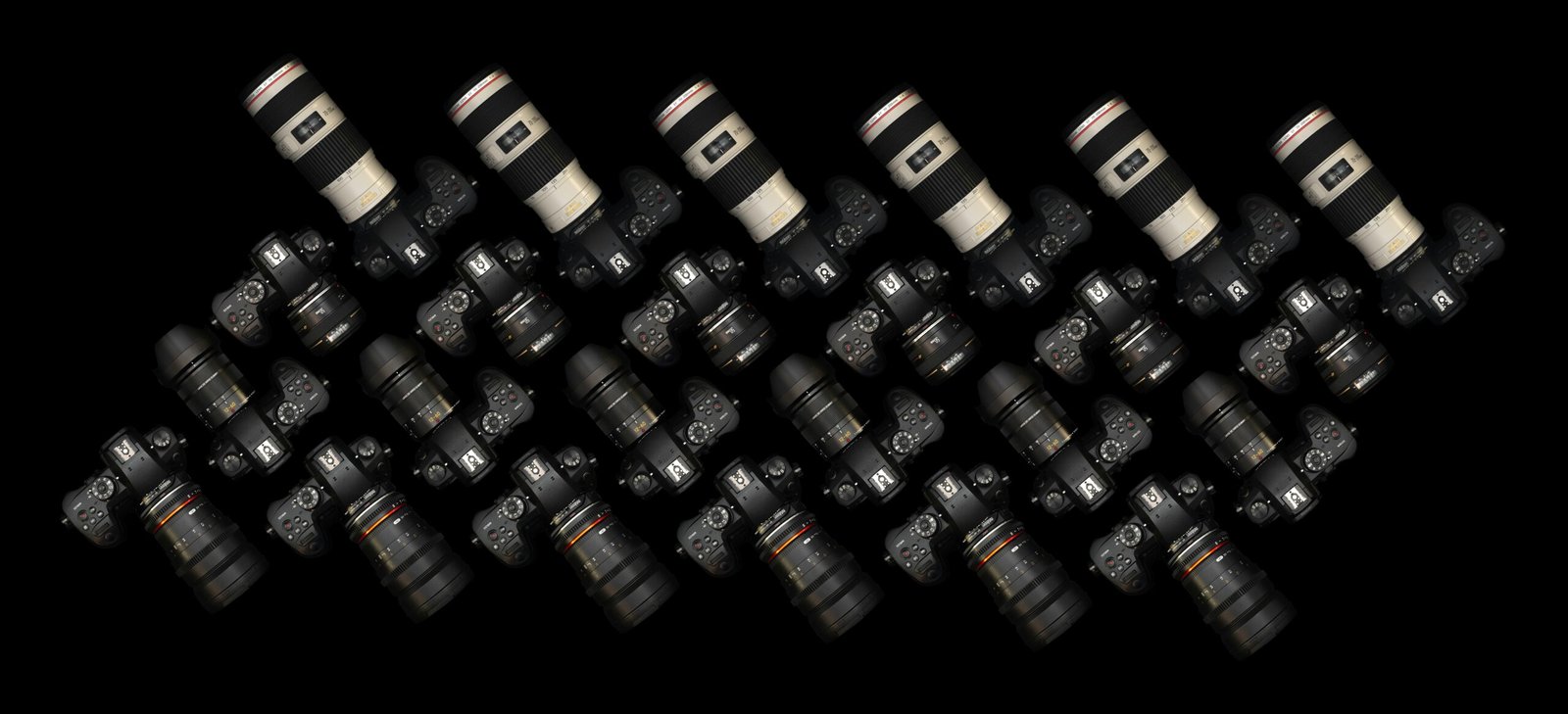
Introduction to Starting a Catering Business
The catering industry has experienced remarkable growth over the past few years, driven by an increasing demand for personalized, high-quality food services at events and gatherings. This expansion presents a lucrative opportunity for aspiring entrepreneurs to enter the market and establish a profitable catering business. The industry’s versatility, encompassing corporate events, weddings, private parties, and more, allows for diverse business models tailored to various client needs.
Embarking on a catering venture requires a comprehensive understanding of the market dynamics, regulatory requirements, and effective business strategies. This is where SureEase, a team of seasoned business experts, comes into play. With years of experience and a wealth of knowledge in the catering sector, SureEase is dedicated to guiding new entrepreneurs through the intricate process of setting up a successful catering business.
SureEase provides invaluable insights into essential aspects such as market research, business planning, and operational efficiency. Their expertise ensures that budding caterers are well-equipped to navigate the complexities of the industry, from compliance with health and safety regulations to developing a competitive pricing strategy. By leveraging SureEase’s guidance, entrepreneurs can make informed decisions that lay a solid foundation for their catering business.
Furthermore, SureEase emphasizes the importance of understanding customer preferences and delivering exceptional service, which are critical components in building a reputable brand. Their holistic approach covers every stage of the business lifecycle, from inception to growth, ensuring that entrepreneurs are prepared to meet the challenges and seize the opportunities that come with running a catering business.
In summary, the catering industry offers substantial potential for new entrepreneurs willing to invest in learning and preparation. With expert guidance from SureEase, you can confidently embark on your journey toward creating a thriving catering business that stands out in a competitive market.
In the initial stages of starting a catering business, conducting thorough market research is paramount. This vital step enables aspiring entrepreneurs to gain a comprehensive understanding of the catering landscape, including target markets, customer preferences, and competitor strategies. By delving into market research, one can pinpoint the specific needs and demands of potential clients, thereby crafting a more tailored and effective business strategy.
Identifying target markets is the first crucial step. It’s essential to define the demographics and psychographics of your potential customers. Are you aiming to cater to corporate events, weddings, or perhaps gourmet meal deliveries? Each segment has distinct requirements and preferences. For instance, corporate clients might prioritize punctuality and professionalism, whereas wedding clients may focus on menu customization and presentation. Understanding these nuances is key to positioning your services effectively.
Next, understanding customer preferences is indispensable. Conduct surveys, focus groups, or utilize online tools to gather data on what potential clients are looking for in a catering service. Pay attention to trends such as dietary restrictions, popular cuisines, and service expectations. This data will guide you in creating menus and services that resonate with your target audience.
Analyzing competitors is another critical aspect of market research. Identify who your competitors are, both direct and indirect, and assess their strengths and weaknesses. What are they doing well? Where are they falling short? This analysis can reveal gaps in the market that your business can fill. For example, if local competitors are not offering vegan options, your catering business could specialize in plant-based menus to attract a specific clientele.
Finding your unique niche within the catering industry involves carving out a segment where you can excel and stand out. Specializing in a particular type of event, such as corporate functions, weddings, or gourmet meal delivery, allows you to tailor your services and marketing efforts more effectively. Your niche should align with your strengths, expertise, and market demand.
By thoroughly engaging in market research and identifying your niche, you set a solid foundation for your catering business. This strategic approach not only helps in understanding the market better but also in delivering services that meet and exceed customer expectations, thereby fostering business growth and success.
Creating a Business Plan
A well-structured business plan is a cornerstone for the success of any catering business. It serves as a roadmap, guiding you through the initial stages and beyond, while also being crucial for securing funding from investors or financial institutions. The first step in crafting a comprehensive business plan is setting clear and achievable business goals. These goals should be specific, measurable, attainable, relevant, and time-bound (SMART), providing a clear vision of where you want your catering business to be in the short and long term.
Next, defining your brand is essential. Your brand is more than just a logo; it encompasses your business’s values, mission, and unique selling proposition. This section should detail how you want customers to perceive your catering business and the experience you aim to deliver. Consider what sets you apart from competitors—be it superior service, unique menu offerings, or exceptional customer care.
Detailing your services is another critical component. Clearly outline the types of catering services you plan to offer, such as corporate events, weddings, private parties, or specialized dietary options. Specify any niche markets you intend to target and describe how your services cater to these specific needs. This clarity not only helps in operational planning but also in marketing your services effectively.
Financial projections are imperative for illustrating the viability of your business. This section should include detailed forecasts of your anticipated income and expenses, including start-up costs, operational costs, and expected revenues. Break down these projections into monthly or quarterly intervals for the first year, and annually for the subsequent years. Include a break-even analysis to demonstrate when you expect your catering business to become profitable.
In summary, a well-crafted business plan is vital for navigating the complexities of starting and growing a catering business. It helps in setting a clear direction, defining your unique brand, detailing your service offerings, and providing robust financial projections to attract potential investors and guide your business towards sustained growth.
Regulatory Requirements and Licensing
Starting a catering business involves navigating a complex web of legal and regulatory requirements to ensure compliance and operational success. One of the first steps is obtaining the necessary licenses and permits. These can vary significantly depending on your location, so it’s imperative to consult your local government’s business office or website for specific guidelines. Typically, you will need a business license, a food handler’s permit, and a health department permit. These permits ensure that your catering business meets the minimum standards for food safety and hygiene.
Understanding health and safety regulations is crucial for any catering business. These regulations are designed to protect both the business owner and the customers. Food safety regulations often include guidelines on food storage, preparation, and transportation. It’s essential to adhere to these guidelines to avoid penalties and ensure the safety of your clients. Regular inspections by health department officials are commonplace, and staying prepared for these inspections is key to maintaining your business’s good standing.
Furthermore, compliance with local, state, and federal laws is non-negotiable. This includes zoning laws that dictate where you can prepare and serve food. Some areas may have restrictions on operating a food business from a residential kitchen, requiring you to use a commercial kitchen instead. Additionally, fire safety regulations must be followed, which often involve having proper ventilation, fire extinguishers, and emergency exits in place.
Specific certifications may also be required depending on your menu and services. For example, if you plan to serve alcohol, obtaining a liquor license is mandatory. Food safety certifications, such as ServSafe, can provide valuable knowledge and demonstrate your commitment to maintaining high standards. More information on these requirements can often be found on the websites of relevant regulatory bodies, such as the U.S. Food and Drug Administration (FDA) or local health departments.
Setting Up Your Kitchen and Equipment
Establishing a professional catering kitchen is a critical step in launching a successful catering business. The initial setup requires careful planning and investment to ensure efficiency, safety, and compliance with health regulations. The types of equipment needed vary depending on the scale and nature of your catering services, but commonly include commercial ovens, refrigerators, freezers, prep tables, and dishwashers. Specialized items such as chafing dishes, food warmers, and high-capacity mixers are also essential for large-scale food preparation.
When sourcing suppliers, it is advisable to consider both local and online vendors. Local suppliers offer the advantage of immediate availability and potential for building long-term relationships. Online suppliers, on the other hand, often provide a broader range of products and competitive pricing. To balance cost and quality, consider purchasing a mix of new and used equipment. While new equipment comes with warranties and the latest features, used equipment can be a cost-effective alternative if sourced from reputable dealers who ensure the items are in good working condition.
Arranging the layout of your kitchen for optimal efficiency and safety is paramount. A well-organized kitchen minimizes the risk of accidents and enhances workflow. Key areas such as food preparation, cooking, and cleaning should be clearly defined and strategically positioned to facilitate smooth operations. Ensure that pathways are unobstructed and that there is ample space for staff to move around comfortably. Additionally, integrate proper ventilation systems to maintain a comfortable working environment and to comply with safety regulations.
Budgeting for equipment is a crucial aspect of setting up your catering kitchen. Prioritize essential items and gradually expand your inventory as your business grows. Allocate funds for routine maintenance and unexpected repairs to avoid disruptions in your service. Maintaining high standards of cleanliness and organization is indispensable in a professional catering kitchen. Implement regular cleaning schedules and safe food handling practices to uphold hygiene standards and prevent contamination.
In conclusion, a well-equipped and efficiently arranged kitchen is the backbone of any successful catering business. By carefully selecting and maintaining your equipment, you lay the foundation for delivering exceptional service and ensuring the longevity of your enterprise.
Hiring and Training Staff
Building a professional and efficient catering team is paramount to the success of any catering business. The first step is to identify the key roles essential for smooth operations. These roles typically include chefs, servers, and event coordinators. Each of these positions demands specific skills and expertise, which must be carefully evaluated during the hiring process.
Recruitment strategies should be multi-faceted to attract a diverse pool of qualified candidates. Advertising job openings on popular job boards, networking within the hospitality industry, and attending job fairs are effective ways to source potential employees. Additionally, leveraging social media platforms can expand your reach and attract talent with the right skill set and passion for the catering industry.
Once potential candidates have been identified, the interviewing process plays a crucial role in selecting the best fit for your team. Structured interviews that include situational and behavioral questions can help assess a candidate’s problem-solving abilities, teamwork, and customer service skills. For positions such as chefs, practical assessments or trial shifts can provide valuable insights into their culinary capabilities and how they perform under pressure.
After hiring, comprehensive training programs are essential to ensure that all staff members are well-prepared to deliver exceptional service. Training should cover various aspects, including food safety, menu knowledge, service protocols, and event management. Hands-on training sessions and shadowing experienced staff can accelerate the learning process and boost confidence.
Creating a positive work culture is equally important. Encouraging open communication, recognizing achievements, and fostering teamwork can significantly enhance job satisfaction and retention. Offering ongoing development opportunities, such as advanced culinary courses or leadership training, not only improves skills but also shows a commitment to employee growth.
By implementing effective recruitment strategies, thorough training programs, and fostering a supportive work environment, you can build a competent and motivated catering team that will contribute to the long-term success of your business.
Marketing and growing your catering business requires a well-rounded approach, encompassing both online and offline strategies. To begin with, building a professional website is imperative. Your website should be user-friendly, visually appealing, and informative, showcasing your services, menu options, pricing, and contact information. Integrating an online booking system can further streamline client interactions and enhance customer convenience.
Social media is another potent tool for marketing. Platforms like Facebook, Instagram, and LinkedIn allow you to reach a broad audience and engage with potential clients. Regularly posting high-quality photos of your dishes, behind-the-scenes content, and customer testimonials can help in creating a strong online presence. Utilizing targeted ads on these platforms can also generate leads and drive traffic to your website.
Networking with event planners, wedding coordinators, and corporate event organizers can significantly expand your client base. Building relationships with these professionals can lead to referrals and repeat business. Attending trade shows and industry events provides an excellent opportunity to showcase your offerings, meet potential clients, and stay updated on market trends.
Creating a strong brand identity is crucial. This includes developing a memorable logo, consistent color schemes, and a tagline that resonates with your target audience. Your brand should reflect the quality and uniqueness of your services, making it easy for clients to remember and recommend you.
A compelling portfolio is essential for attracting new clients. This should include high-resolution photographs of your best work, detailed descriptions of past events, and any unique services you offer. Including customer testimonials and reviews can further boost your credibility and build trust with prospective clients.
Continually seeking feedback from clients and adapting to market changes is vital for sustained growth. Regularly conducting surveys and asking for client feedback can provide valuable insights into areas for improvement. Staying abreast of industry trends and being willing to innovate will ensure your catering business remains competitive and relevant.
Managing Finances and Scaling Your Business
Effective financial management is crucial for the success of any catering business. Establishing a comprehensive budget is the first step. This includes forecasting all potential expenses such as ingredients, labor, equipment, and venue costs. A well-structured budget helps in maintaining financial stability and avoids unexpected shortfalls. Regularly reviewing and adjusting your budget ensures that you stay aligned with your business goals and market conditions.
Pricing strategies play a pivotal role in determining your business’s profitability. Conducting thorough market research to understand your competitors’ pricing structures and customer expectations can guide you in setting competitive yet profitable prices. Consider factors such as food costs, labor, and overheads when determining your menu prices. A cost-plus pricing model, which adds a standard markup to the cost of goods, is commonly used in the catering industry.
Managing cash flow effectively is another critical aspect. Ensure that your accounts receivable are managed efficiently to avoid cash flow bottlenecks. Implementing a robust invoicing system and offering multiple payment options can expedite payments. Additionally, keeping track of expenses meticulously can highlight areas where cost savings can be achieved. Utilizing accounting software can simplify this process, providing real-time insights into your financial health.
As your catering business grows, scalability becomes a key consideration. Planning for growth involves assessing your current operations and identifying areas that can accommodate increased demand. This may include investing in larger kitchen facilities, hiring additional staff, or upgrading equipment. Strategic planning for scalability ensures that you can handle larger events without compromising on quality or service.
Diversifying revenue streams is another strategy to enhance profitability. Exploring new market opportunities, such as corporate catering, wedding services, or offering cooking classes, can provide additional income. Partnerships with event planners, venues, and local businesses can also open new avenues for growth. Continuously exploring and adapting to market trends will position your catering business for long-term success.










